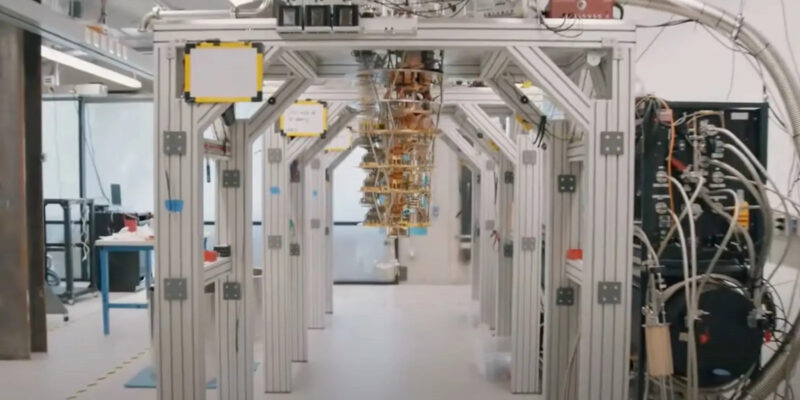Time chargers are back in the news, and not the bones from TimeSplitters. A study lately published in Nature builds upon former exploration released before this time on time chargers, a new phase of matter that holds significant pledge for the future of amount computing. This time around, the experimenters say Google’s Sycamore amount tackle was used to observe a stable time demitasse.
What’s a time demitasse?
Unless you ’re a physicist, the nature of a time demitasse is likely delicate to understand. Experimenters from Stanford University, one of the institutions behind the new study, describe this phase of matter as akin to “ a timepiece that runs ever without any batteries.” Google attempts to further simplify effects, explaining on its blog that time chargers feature tittles that form “ an oscillating pattern (…) in time.”
When someone thinks of chargers, they probably imagine commodity like precious rocks. Those chargers feature layers of tittles that, if observed at the bitsy position, form repeating patterns in space. Time chargers differ — and putatively break the laws of nature — by featuring tittles infinitely repeating in time without fresh energy or entropy.
Stanford notes that time chargers do not, in fact, break the laws of drugs, as their entropy “ remains stationary over time, hardly satisfying the alternate law of thermodynamics by not dwindling.” The conception of time chargers — that is, of stable matter composed of tittles that form an oscillating pattern in time — was proposed several times agone, but the new creation of a time demitasse is a huge corner in the field of amount drugs (via APS Physics).
Creation advance
The new advance comes from experimenters with Google Quantum AI, Stanford University, Oxford University, and the Max Planck Institute for Physics of Complex Systems. This new development represents the first case of a time demitasse demonstrating what’s called numerous- body localization, a state that past “ nearly- time- demitasse” trial mileposts failed to achieve, according to Stanford.
Google Quantum AI’s Aeroplane amount calculating tackle played an important part in this development. The design involved using the tackle to corroborate the time demitasse as similar; without this, commodity that seems to be a time demitasse could, in fact, ultimately fall into ineluctable complaint over a putatively unfathomable period of time Quantum calculating — in this case, the Sycamore processor — way in to observe the oscillating patterns in time, taking the claim of a stable time demitasse and using hard data to demonstrate it. Stanford notes that amount computing tackle is amiss with “ finite size and consonance of time,” but that experimenters were suitable to overcome these limitations with colorful protocols.
This trial involved exercising Google Quantum AI’s tackle to hit the time demitasse with 20 spins of amount bits of information (qubits); a many hundred cycles of the oscillations were observed, as indefinitely watching the time demitasse over eons to corroborate its stability is n’t possible.
Max Planck Institute for Physics of Complex Systems director and studyco-author Roderich Moessner developed on the use of Google’s tackle as part of the time demitasse trial, stating Going forward Creating a new phase of matter is plainly instigative on a abecedarian position,” the Stanford experimenters said as part of their advertisement. Google, for its part in this development, points toward the instigative future amount calculating pledges, at least when it comes to scientific discovery and the unborn amount inventions that may affect across a variety of fields.
Google explains that there’s still ample work to complete before a true amount computer is developed, though its Quantum AI division anticipates developing “ a useful, error- corrected amount computer” within this decade The company has spent times making benefactions to the algorithms and propositions that ’ll play crucial places in an eventual error- corrected amount computer. For now, the company’s amount processors offer scientists a way to confidently model stable time chargers, opening the door for a new world of studies into new phases of matter.















![How to solve [pii_email_af9655d452e4f8805ebf] Error?](https://themediahubs.com/wp-content/uploads/2023/02/U9rr3rhWhUvxCSyrdw3r5MZLGTsfOGbJeliDmntx-1-1-400x225.jpg)



![How to solve [pii_email_af9655d452e4f8805ebf] Error?](https://themediahubs.com/wp-content/uploads/2023/02/U9rr3rhWhUvxCSyrdw3r5MZLGTsfOGbJeliDmntx-1-1-180x180.jpg)
Comments